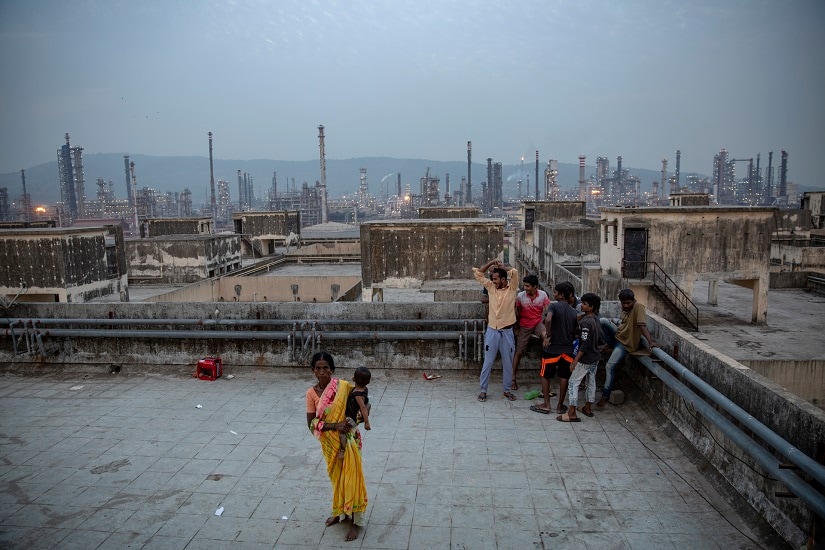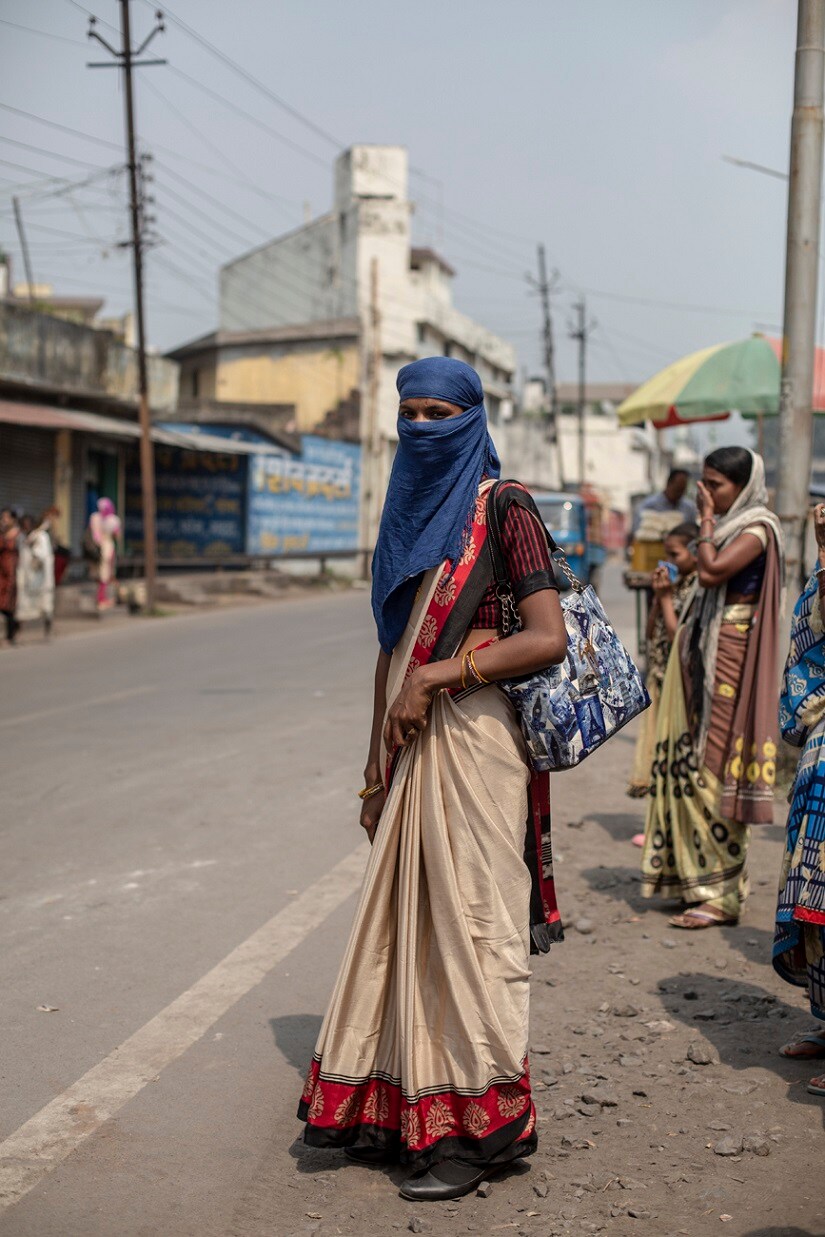A study published in December 2018 stated that air pollution caused 80 deaths in Delhi — every day. Two months later, chest surgeon Arvind Kumar wrote for The Washington Post that the air in India’s capital city was ‘a health emergency’. While last year’s smog crisis represented in a sense, the peaking of the ailment, the larger picture remains elusive. ‘Elusive’ in the sense that India’s pollution problem is beset by a narrative fatigue when it comes to scoping the hinterland or people living on the margins of modern urban centres. To contextualise this ongoing disaster — and better yet, offer a glimmer of hope — journalist Aruna Chandrasekhar and photographer Ishan Tankha have been travelling to different parts of the country, recording stories and images as part of a project called Breathless: Documenting India’s Air Emergency. [caption id=“attachment_6763091” align=“alignnone” width=“825”]  Mahul, a fishing village in Chembur, Mumbai. Photo courtesy Ishan Tankha[/caption] It was around August last year that the Clean Air Collective brought Aruna and Ishan on board to carry out a unique project. “It is usually in August, after the monsoon, that everyone’s eye turns towards Delhi’s pollution. Clean Air Collective is a group of different organisations working on the issue of pollution. Its members range from concerned mothers to researchers working to create pollution monitoring networks,” Aruna says. Aruna believes that decentralising the problem of pollution — primarily, expanding the gaze to places other than Delhi — is a huge task in itself. “After Ishan and I were brought on board, we had to look at the project with a brief of ordinary people facing extraordinary pollution. Under this, there would be categories like people who suffer ailments due to pollution, people who are trying to address the problem and so on,” she explains. Ishan and Aruna traversed vast distances as part of the project: from the coal mines of Chhattisgarh to the paddy fields of Punjab. “Chhattisgarh, incredibly, doesn’t even have a pollution monitoring system!” Aruna recounts. “There is no data being recorded of the pollution caused there by mining and other industrial projects. Does that mean that the adivasis’ lungs aren’t as important?” [caption id=“attachment_6763121” align=“alignnone” width=“825”]  A protest site on the footpath in the suburb of Kurla is practically home for hundreds of women. Their homes were bulldozed allegedly for the security of Mumbai’s Tansa pipeline, only to be relocated to the industrial ghetto of Mahul. Photo courtesy Ishan Tankha[/caption] On the other hand, cities are teeming with people who have access to monitoring applications on their phones. However, it hasn’t necessarily translated into outrage (over pollution levels) — the kind social media usually catalyses — despite the fact that this is a public health emergency of extraordinarily fatal proportions. “Every child born in Delhi is born a chain-smoker,” Aruna asserts. “I think we have cocooned ourselves. Millennials may have access to information and they may be aware, but prefer to live in a bubble. They opt for a Swiggy and are happy to pay for someone else to brave the pollution of the city to get them their food.” The apathy however, isn’t all-pervasive. Take for example the Collective itself, which has volunteers fighting for the right to breathe. “For my children to have the lungs of a smoker by their teens, through no fault of their own, is absolutely unacceptable. When you realise that we are talking about millions of children, it is, and must be an official health disaster,” Bhavreen, a member of the CAC, says. [caption id=“attachment_6763081” align=“alignnone” width=“825”]  Activist Laxmi Chauhan from Korba, Chhattisgarh has faced life threats from taking on powerful polluters. Photo courtesy Ishan Tankha[/caption] There are other stories, like that of a Kabaddi coach in Chennai and activists fighting for rights in Chhattisgarh, that the project attempts to highlight. “We must engage with decision making officials. Let them look mothers in the eye and say they sanctioned forests to be cut. We cannot watch our children dying slow deaths,” Bhavreen says. The photos and words by Ishan and Aruna help contextualise an issue that is either too gradual or too vague in its effects to sound alarming. Every year, Delhi at least, is bombarded by facts that must horrify those who wish to continue living here. The horror, however, is short-lived, the outrage muted. Then again, this is not just Delhi’s problem. Suggested read — Delhi air pollution: Not bans, solutions must be explored to end practice of stubble burning by farmers Eight Indian cities recently featured in a list of the world’s 10 most polluted. They can be inferred to be uninhabitable, to an extent. Further, India’s air pollution crisis isn’t a preserve of the urban population alone. Its villages, industrialised corridors are on the brink of emergency as well. “Air pollution can travel up to 400 kilometres. Delhi should stop seeing it as an insulated problem. No one is immune,” Aruna says. [caption id=“attachment_6763101” align=“alignnone” width=“825”]  Korba’s masked avengers. When your lives and lungs are spent tailing coal trucks spewing exhaust in your face, the unfiltered-by-forest sun beating down on you, it’s time to adapt. Nearly every young woman and some men on the move in Korba, wear an improvised dupatta to cover their faces. All of them said this was because of the relentless coal dust and the heat. Photo courtesy Ishan Tankha[/caption] One of the foremost challenges in executing this project, Aruna says, was finding stories. “It isn’t easy to find stories where people are fighting pollution and raising their voice. But we did get to some and it was as rewarding for us to study their journey as their work must be for the environment,” she says. That said there is a fair amount of apathy to go around, and the likelihood that people will continue to bypass a disaster they are themselves contributing to and will eventually succumb to as well. “I think the cocoons are just getting bigger. We take cabs for distances we should walk. Our offices are literally boxes. There is no end to buying cars. Our interaction with the actual world has become minimal,” Aruna enumerates, then adds: “It is disastrous to imagine these convenient blinders will save us.” Breathless is on display at Bikaner House, Delhi
Journalist Aruna Chandrasekhar and photographer Ishan Tankha have been travelling to different parts of the country, recording stories and images about air pollution as part of a project called Breathless: Documenting India’s Air Emergency.
Advertisement
End of Article


)

)
)
)
)
)
)
)
)



